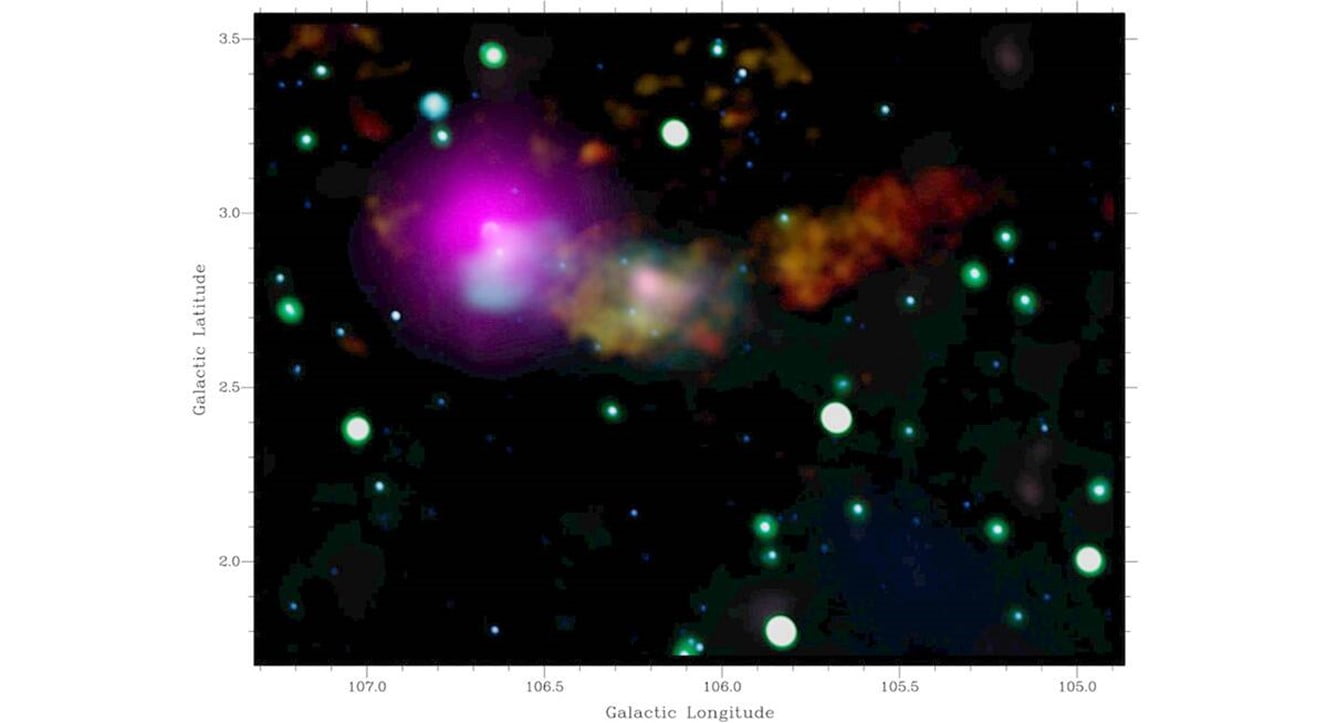Science and Technology
In News: A study using 12 years of data from NASA’s Fermi telescope helped scientists understand PeVatrons.
- PeVatrons, the source of some of the highest energy particles that whip across our galaxy.
- Streams of particles called cosmic rays travel at breakneck speeds around our galaxy and they also strike our planet’s atmosphere.
- They typically consist of protons but sometimes also include atomic nuclei and electrons.
- They all carry an electric charge, this means that their paths deviate and scramble as they go through our galaxy’s magnetic field.
- This means that it is no longer which direction they originally came from, effectively masking their birthplace.
- But when the particles that are part of cosmic rays collide with the gas near supernova remnants, they produce gamma rays; some of the highest-energy forms of radiation that exist.
- These particles get trapped by the chaotic magnetic fields near supernova remnants.
- They pass through the supernova’s shock wave multiple times and each time they do, they gain speed and energy.
- Eventually, they can no longer be held by the supernova remnant and will caree off into deep space.
- These particles are boosted to 10 times the energy that the Large Hadron Collider, the most powerful man-made particle accelerator, can generate.

Source: Indian Express
Previous Year Question
Q.1) If a major solar storm (solar flare) reaches the Earth, which of the following are the possible effects on the Earth? (2022)
- GPS and navigation systems could fail.
- Tsunamis could occur at equatorial regions.
- Power grids could be damaged.
- Intense auroras could occur over much of the Earth.
- Forest fires could take place over much of the planet.
- Orbits of the satellites could be disturbed
- Shortwave radio communication of the aircraft flying over polar regions could be interrupted.
Select the correct answer using the code given below;
- 1, 2, 4 and 5 only
- 2, 3, 5, 6 and 7 only
- 1, 3, 4, 6 and 7 only
- 1, 2, 3, 4, 5, 6 and














